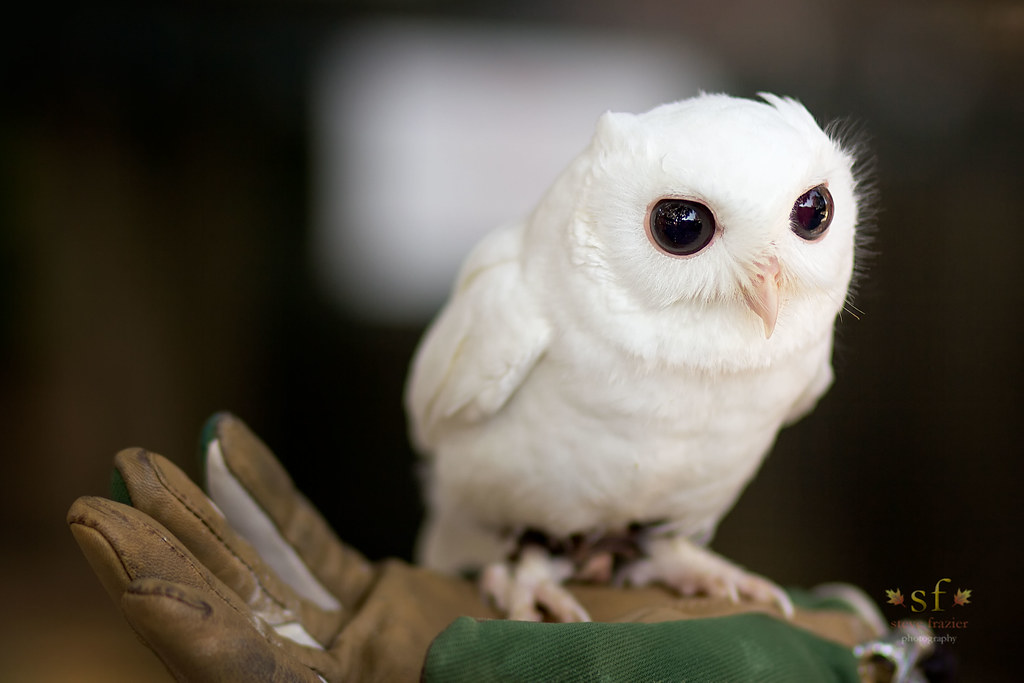

Genetic testing revealed a reasonably distinct genetic makeup for snowy owls, being about 8% genetically distinct from other Bubo owls, perhaps giving credence to those who count the species as separate under Nyctea. The engraving Snowy Owl, Plate 121 of The Birds of America by John James Audubon. Often authorities are motivated to retain the separate genus on the grounds of osteological distinctions. However, some authorities debate this classification, still preferring Nyctea. Until recently, the snowy owl was regarded as the sole member of a distinct genus, as Nyctea scandiaca, but mtDNA cytochrome b sequence data shows that it is very closely related to the horned owls in the genus Bubo and the species is now thusly often considered inclusive with that genus. Linnaeus originally described the different plumages of this owl as separate species, with the male specimens of snowy owls being considered Strix scandiaca and the likely females considered as Strix nyctea. The former genera name Nyctea is derivation of Greek meaning "night". The genus name Bubo is Latin for an horned owl and scandiacus is New Latin for of Scandinavia. The snowy owl was one of the many bird species originally described by Carl Linnaeus in his landmark 1758 10th edition of Systema Naturae, where it was given the binomial name Strix scandiaca. 8.1 Anthropogenic mortality and persecution.5.5 Interspecific predatory relationships.While the causes are not well-understood, numerous, complex environment factors often correlated with global warming are probably at the forefront of the fragility of the snowy owl's existence. Whereas the global population was once estimated at over 200,000 individuals, recent data suggests that there are probably fewer than 100,000 individuals globally and that the number of successful breeding pairs is 28,000 or even considerably less. However, recent data suggests the species is declining precipitously. Given the difficulty of surveying such an unpredictable bird, there was little in depth knowledge historically about the snowy owl's status. A largely migratory bird, snowy owls can wander almost anywhere close to the Arctic, sometimes unpredictably irrupting to the south in large numbers.


The snowy owl is a nomadic bird, rarely breeding at the same locations or with the same mates on an annual basis and often not breeding at all if prey is unavailable. Despite the short Arctic summer, the development of the young takes a relatively long time and independence is sought in autumn. The snowy owl lays a very large clutch of eggs, often from about 5 to 11, with the laying and hatching of eggs considerably staggered.

Snowy owls typically nest on a small rise on the ground of the tundra. Its breeding efforts and entirely global population are closely tied to the availability of tundra-dwelling lemmings but in the non-breeding season and occasionally during breeding the snowy owl can adapt to almost any available prey, most often other small mammals and northerly water birds (as well as, opportunistically, carrion). The snowy owl is both a specialized and generalist hunter. Most owls sleep during the day and hunt at night, but the snowy owl is often active during the day, especially in the summertime. The composition of brown markings about the wing, although not foolproof, is the most reliable technique to age and sex individual snowy owls. Juvenile male snowy owls have dark markings that may appear similar to females until maturity, at which point they typically turn whiter. Males tend to be a purer white overall while females tend to more have more extensive flecks of dark brown. One of the largest species of owl, it is the only owl with largely white plumage. It has a number of unique adaptations to its habitat and lifestyle, which are quite distinct from other extant owls. Snowy owls are native to the Arctic regions of both North America and the Palearctic, breeding mostly on the tundra. The snowy owl ( Bubo scandiacus), also known as the polar owl, the white owl and the Arctic owl, is a large, white, owl of the true owl family.


 0 kommentar(er)
0 kommentar(er)
